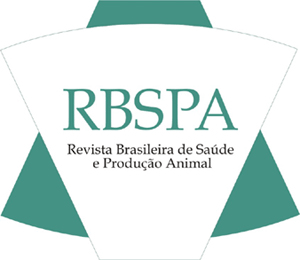Abstract
This study aimed to evaluate the genetic diversity of Santa Inês sheep in Piauí state farms using RAPD markers. A total of 164 specimens belonging to six cities of Central-Northern and Southwestern regions were analyzed. After isolating the DNA, we assessed the potential of 34 primers, of which only five showed bands with sufficient resolution. Thirty-seven distinct loci were amplified, of which 36 were polymorphic. Despite the overall high polymorphism (97.2%) the rate of polymorphism within each population was reduced (mean = 69.82%/population), showing that all the herds have a high diversity but that each isolated population may be suffering the effects of inbreeding. The indices of genetic diversity (Hs) and inbreeding (f) showed, respectively, values of 0.289 and 0.172. Both showed homozygote excess and positive consanguinity within the farms. The composition of the sampled herds almost exclusively by females may be the explanation for these results, where half-brothers compose most of the offspring. The above results were confirmed by AMOVA tests (ΦST = 0.199), which showed significant genetic differences between farms. Also, the analysis of Structure software indicated the presence of three distinct genetic groups, which may characterize the occurrence of animals belonging to the "New Santa Inês" among the sampled sheep.
molecular characterization; molecular markers; Ovis aries ; population structure; RAPD

 Genetic diversity characterization of Santa Inês sheep Piauí State farms
Genetic diversity characterization of Santa Inês sheep Piauí State farms

